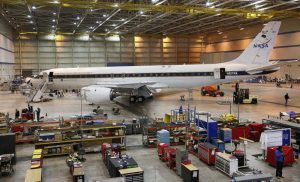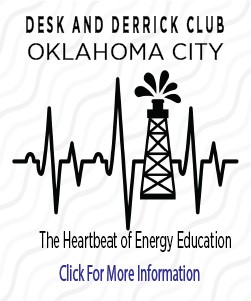
A stunning story was recently revealed by the Los Angeles Times how the Environmental Protection Agency and the state of Texas refused to allow scientists to fly with sophisticated air samplers over Houston following Hurricane Harvey.
Here is how the newspaper reported part of the story:
In the weeks after Hurricane Harvey’s catastrophic sweep through the Houston area — which resulted in chemical spills, fires, flooded storage tanks and damaged industrial plants — rescue crews and residents complained of burning throats, nausea and dizziness.
Fifteen hundred miles west in the high desert city of Palmdale, NASA scientists were preparing to fly a DC-8, equipped with the world’s most sophisticated air samplers over the hurricane zone to monitor pollution levels.
The mission never got off the ground. Both the state of Texas and the EPA told the scientists to stay away.
According to emails obtained by The Times via a public records request and interviews with dozens of scientists and officials familiar with the situation, EPA and state officials argued that NASA’s data would cause “confusion” and might “overlap” with their own analysis — which was showing only a few, isolated spots of concern.
“At this time, we don’t think your data would be useful,” Michael Honeycutt, Texas’ director of toxicology, wrote to NASA officials, adding that low-flying helicopters equipped with infra-red cameras, contracted by his agency, would be sufficient.
EPA deferred to Honeycutt, a controversial toxicologist who has suggested air pollution may be beneficial to human health.
The response stunned NASA scientists, many of whom had flown similar missions in the past, including over the 2010 Deepwater Horizon oil spill in the Gulf of Mexico.
An EPA spokesman said the decision to wave off the Hurricane Harvey mission was made by Texas state officials, whose own pollution monitoring efforts included mobile bus units and crews with hand-held devices on the ground.
But NASA scientists say that, had the DC-8 been deployed, it would have provided the most comprehensive and detailed analysis of air quality in the region, allowing for a more thorough understanding of the situation.
“It’s totally possible we’d have found nothing at all to be concerned about,” said Tom Ryerson, a National Oceanic and Atmospheric Administration researcher who had previously been part of the Deepwater Horizon mission. “But at least we’d have known that,” he said, “without a doubt.”
Some see the EPA decision as part of a pattern.
Since taking office, the Trump administration has rejected and suppressed established science, partnered with fringe researchers and embraced industry-backed views — including appointing a former coal lobbyist as its new EPA administrator.
At the time of the hurricane, the agency was run by Scott Pruitt, who during his tenure targeted dozens of environmental regulations for rollback, including several focused on air pollution.
“This is a very clear illustration of the politics of knowledge,” said Scott Frickel, an environmental sociologist at Brown University, referring to the rejection of the NASA jet. “The EPA Region 6 and Texas authorities don’t want to know, so they are passing on something really important about urban-scale disasters.”
Clouds of benzene over Houston
On Aug. 25, 2017, Harvey stalled over the Texas coast, unleashing record rainfall on Houston and Galveston.
The area is one of the most heavily concentrated industrialized hubs in the nation, home to thousands of petroleum refineries and chemical manufacturing plants and more than a dozen Superfund sites. Over the next eight days, the storm dumped more than 60 inches of rain on some areas of the region, pummeling it with wind gusts in excess of 150 mph, according to the U.S. Geological Survey and EPA.
On Aug. 28, Gov. Greg Abbott suspended state emission rules, including those governing air pollution, after the Texas Commission on Environmental Quality argued they would impede disaster response. The rules remained suspended for the next seven months.
Read full story by clicking here.





